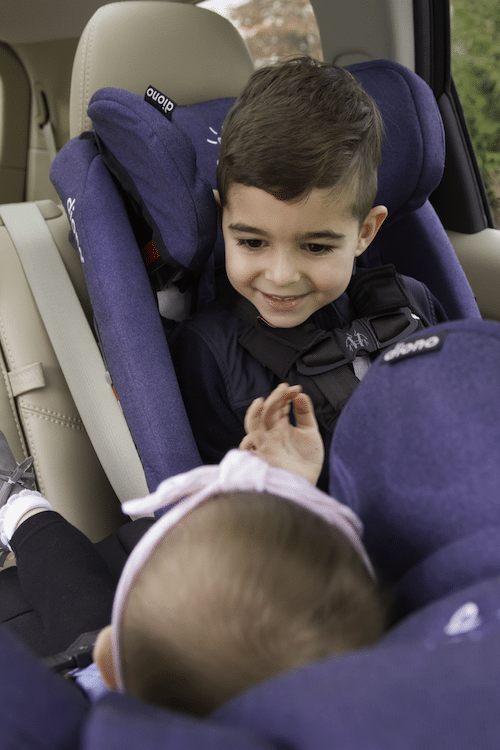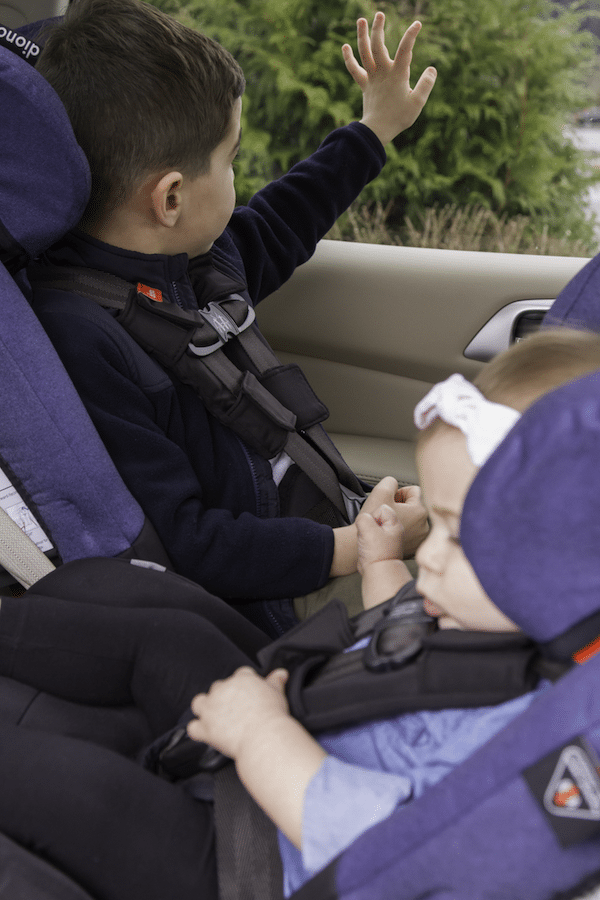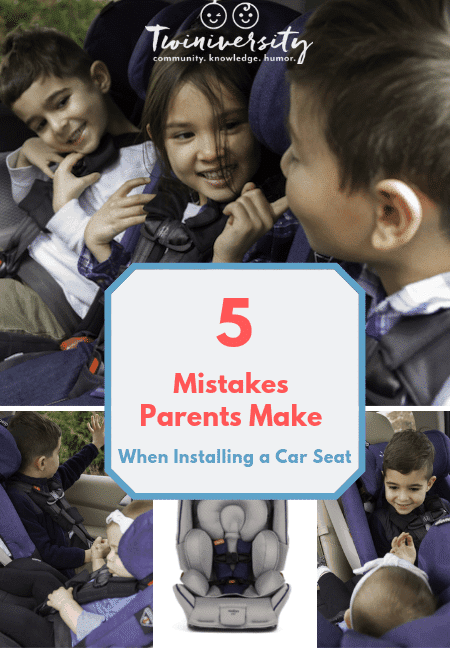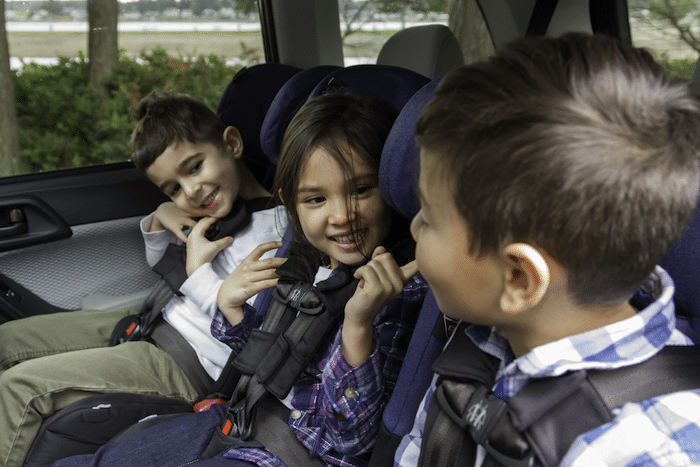Last updated on May 2nd, 2024 at 10:26 am
Does installing a car seat intimidate you? You’re not alone! Even the most experienced of parents question their car seat installation abilities now and then. Every car seat is different, and so is every car. Here are five common mistakes that parents make when installing a car seat:
Mistake #1: Not Reading Your Manuals
Always always ALWAYS read your car seat manual from cover to cover. You also need to read your car’s manual section on installing car seats. Your car’s manual will let you know where in your car you can find the LATCH system, tether points, and airbags, as well as the best places in your car to install car seats. It will also tell you the weight maximum on the LATCH system lower anchors, which is important to know! Once your kids max out the weight limit on those lower anchors, you need to start using the car’s seat belt to install the seat.

Mistake #2: Not Installing the Seat Tightly Enough
When you install a car seat correctly, there should be no more than 1 inch of wiggle when you try to jiggle the seat from side to side and front to back. Ideally, there would be no wiggle at all. Make sure you’re tightening the LATCH lower anchors as tightly as you can.
If you’re installing with a seat belt, you’ll need to use a secure lock-off, either with a mechanism that’s provided on the car seat or by fully locking off the seat belt’s retractor. Your car seat manual will explain the best way to do this.
If your child is in forward-facing position, you must use the upper tether on a tether point made for car seat installation. Don’t just tether the car seat to anything in your car! Check your car’s manual to make sure you’re using the correct tether point.
Mistake #3: The Harness Is Too Loose
Before you tighten the harness, check to make sure the top of the harness is at the right position for your child’s shoulders. If using a rear-facing seat, the harness should lay at or below your child’s shoulders. If using a forward-facing seat, the harness should lay at or above your child’s shoulders. Make sure to check this every time you use the seat, as kids can have a growth spurt overnight!
When you tighten the harness to secure your child in the seat, make sure that the harness lays flat and flush against their body. The harness should be snug and you should not be able to pinch the strap (click here for a video demonstration.) But how do you know if the harness is too tight? You should be able to fit one finger underneath the harness comfortably.
If your child complains it’s too tight, they are probably just not used to it being installed correctly. Give them a few days to get used to it. Resist the temptation to loosen the harness, and if you need to, explain that race car drivers have to wear very snug harnesses too! If that doesn’t work, try telling them it’s the rules of the police that say we have to keep the harness tight (that always works for my kids!) If that fails, introduce some new car-safe toys to distract them!

Mistake #4: The Chest Clip Is in the Wrong Position
Did you know that the retainer clip (aka chest clip or t-bar) should be aligned with your child’s armpits? This is the easiest way to make sure you’re placing the clip in the correct position. This clip helps to keep the harness in the best position in the event of a crash. It’s important to not place the clip too low, which may injure your child in an accident.
Mistake #5: Turning the Seat From Rear-Facing to Forward-Facing Too Soon
The American Academy of Pediatrics (AAP) recommends rear-facing your child in a car seat until they are at least two-years-old. But you can rear-face much longer as long as your child is within the maximum height and weight for their seat. Think about it — the safest way to travel is rear facing.
But why do we rear-face anyway? According to Dennis Durbin, MD, FAAP, and lead author of the AAP policy statement, “A rear-facing child safety seat does a better job of supporting the head, neck and spine of infants and toddlers in a crash, because it distributes the force of the collision over the entire body. For larger children, a forward-facing seat with a harness is safer than a booster, and a belt-positioning booster seat provides better protection than a seat belt alone until the seat belt fits correctly.”
We strongly recommend that you wait until your child has reached the maximum weight or height on their seat for rear-facing before turning them around. The longer your child can be in a rear-facing harness, the safer they will be.
As your child grows, don’t rush the transition from infant seat to a convertible, convertible to a booster, or booster to seatbelt. Most children will not fit in most vehicle seatbelts without a booster until 10 to 11 years of age. All children younger than 13 should ride in the back seat. (Source)

Julie Burt Nichols is Twiniversity’s Dean of Parents, serving as Editor-in-Chief of Twiniversity.com, Account Manager, and Instructor for Twiniversity classes. Julie is mom to twin 6-year-old boys, Desmond & Alec, who were born on Halloween. Julie loves her job as the “Wizard Behind the Curtain” at Twiniversity — the #1 global resource and support network for parents of twins. She loves serving as a resource and support for parents of twins in the Chicago area. Julie is proud to be a certified child passenger safety technician.
Related Articles
- 11 Must-Have Supplies For A Road Trip With Twins
- Should I Bring My Car Seats On An Airplane?
- Life Hacks to Make Caring For Twins Easier








